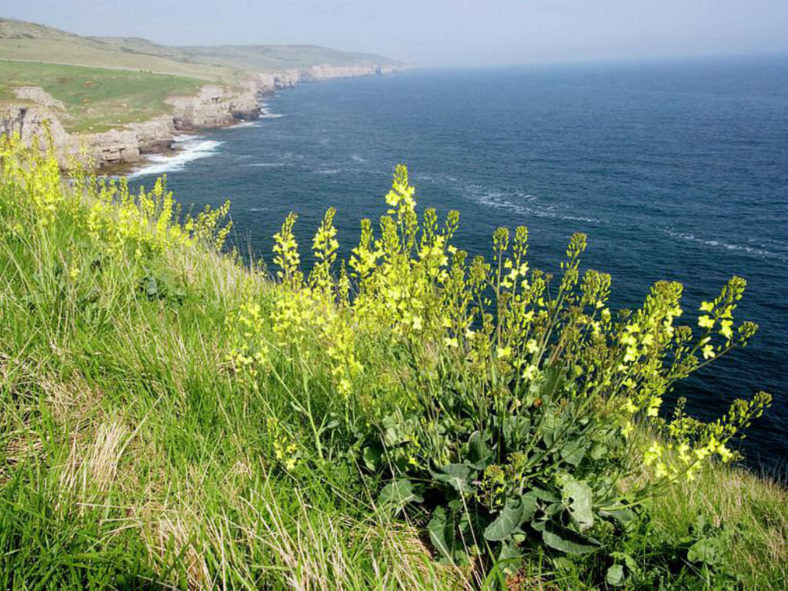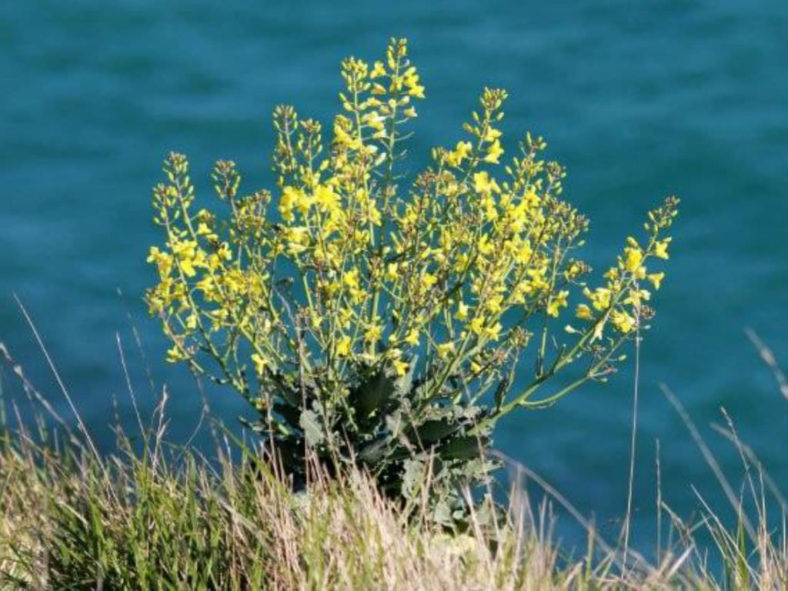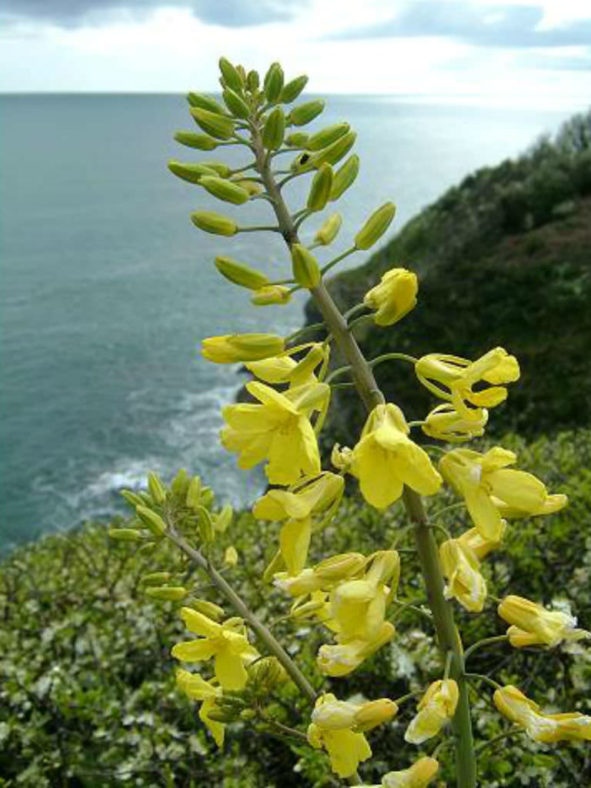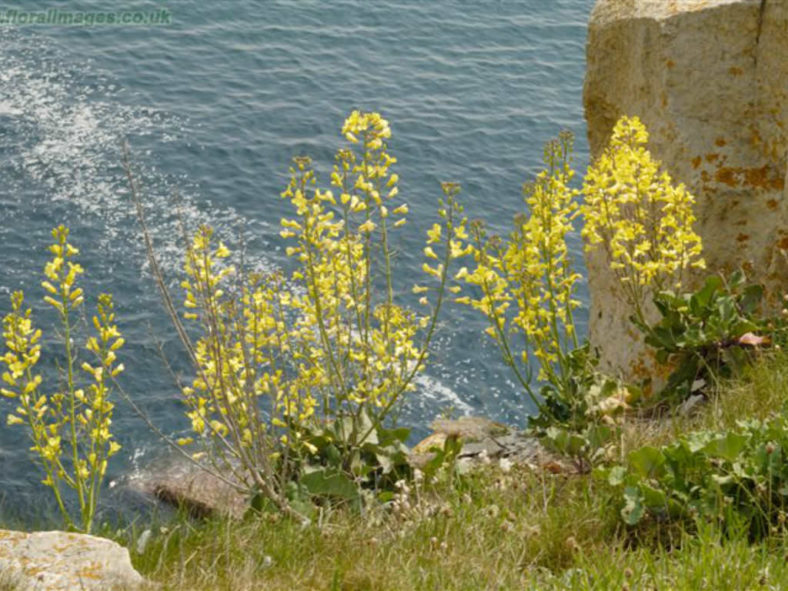Scientific Name
Brassica oleracea L.
Common Name(s)
Wild Cabbage
Synonym(s)
Brassica oleracea subsp. oleracea, Crucifera brassica, Napus oleracea, Raphanus brassica
Scientific Classification
Family: Brassicaceae
Tribe: Brassiceae
Genus: Brassica
Flower
Color: Yellow
Bloom Time: Late spring to mid-summer
Description
Brassica oleracea is a tall biennial plant that forms a stout rosette of large leaves in the first year. The leaves are fleshier and thicker than other Brassica species, an adaptation that helps it store water and nutrients in its difficult growing environment.
In its second year, the plant uses the stored nutrients to produce a flower spike with numerous yellow flowers, reaching up to 7 feet (2.1 m) in height.

Hardiness
USDA hardiness zones 6a to 9b: from −10 °F (−23.3 °C) to 30 °F (−1.1 °C).
How to Grow and Care
Wild Cabbage can be grown like any other cabbage. Sow the seeds in the spring in pots or directly in the ground. These plants do not have to be grown halfway up a cliff to thrive and do well in most garden soils. They are biennial and so flower and set seed in the second year. After that, they can more or less be left to their own devices and treated as hardy perennials.
It is often found wild by the coast and tolerates considerable maritime exposure. This species has long been cultivated for its edible leaves, stems, etc., and various forms have been developed, including cabbage, cauliflower, broccoli, and the Brussels sprout. Most of these forms are biennial in cultivation, though there are also some perennial forms.
Wild Cabbage can be used as a cut-and-come-again plant. The leaves and stems are edible raw, but only use the younger stems as the older ones become very tough. The leaves and stems are really good for sauerkraut. The flowering heads, which look like broccoli, are also edible raw and are good for salads. The seeds, like any other cabbage, can be used for sprouting.
Origin
Brassica oleracea is native to coastal southern and western Europe.
Links
- Back to genus Brassica
- Plantpedia: Browse flowering plants by Scientific Name, Common Name, Genus, Family, USDA Hardiness Zone, or Origin
Photo Gallery
Click on a photo to see a larger version.




